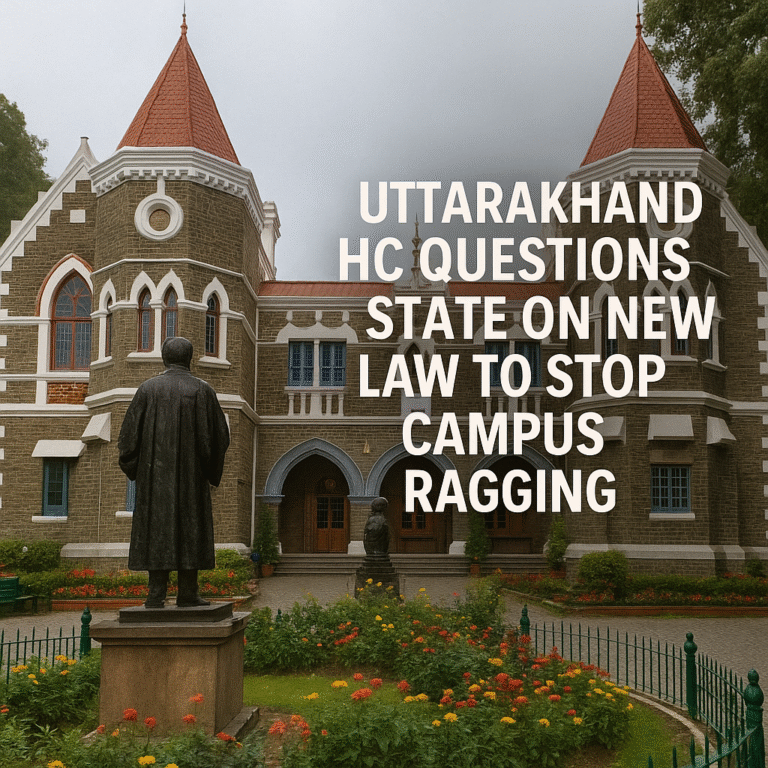Division Bench Seeks Clarification
A bench of Chief Justice G. Naredar and Justice Subhash Upadhyay raised the issue after petitioner Sachidanand Dabral accused the Centre, NMC, and the state of filing false affidavits.
- The court allowed Dabral to submit a rejoinder.
- It also asked the state whether it plans to model a law after the Andhra Pradesh Prohibition of Ragging Act.
Case Rooted in Viral 2022 Ragging Video
The video showed 27 first-year MBBS students walking with shaved heads and tied hands.
The visuals sparked outrage and led to a Public Interest Litigation.
Dabral described it as “brutal, barbaric, Taliban-type ragging.”
Court Actions and Findings
- The HC formed a two-member panel (Kumaon Commissioner Deepak Rawat & DIG Nilesh Anand Bharne) to investigate.
- Ordered:
- Registration of an FIR.
- Formation of anti-ragging committees in every college.
- District-level monitoring by magistrates.
Despite these orders, the court noted no compliance reports by July 2024, terming it “blatant negligence.”
Repeated Lapses Continue
- By October 2025, the court observed the same omissions.
- Issued show-cause notices to the Centre, NMC, and the state.
- Warned that institutional heads will be held personally accountable.
Why a New Law Matters
- States like Andhra Pradesh, Maharashtra, and West Bengal already have specific anti-ragging acts.
- A state-level law could strengthen accountability, ensure faster disciplinary action, and protect student welfare.
Conclusion
The Uttarakhand High Court’s directive is a wake-up call for policymakers.
Without a strong, state-backed law, ragging continues to thrive behind procedural loopholes.
A dedicated act could finally ensure that students study without fear or humiliation, making campuses safer across Uttarakhand.

